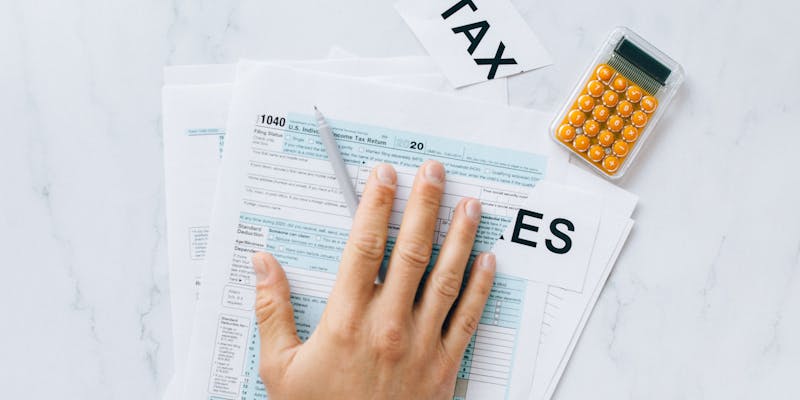
The IRS and customers are notified of specific donations and other potentially tax-deductible costs through the 1098 paper and its variations. They specifically cover things like mortgage interest payments, contributions made by cars, yachts, or airplanes, interest paid on student loans, and details on tuition and scholarships.
Except 1098-C, the IRS mandates that most of these papers be filled out and returned to consumers by the final day of January of the following year so that they may utilize the data to finish their tax returns.
Form 1098: Borrower Interest Statement: What Is It?
When paying interest and other related costs on a mortgage throughout the tax year, taxpayers utilize Form 1098, Loan Interest Statement, an IRS form, to record the entire amount paid, up to $600. Points spent during the property's acquisition are considered related costs. Points are prepayments related to interest payable on a house loan to increase the lender's mortgage interest rate.
Form 1098 is used for two things:
- It is used by lenders to disclose interest payments that exceed $600 in a given year. To guarantee accurate accounting information for creditors and other organizations that get interest payments, the IRS gathers this data.
- When calculating the annual interest payment, homeowners utilize it to ascertain the entire quantity of interest they pay.
Which Person Gets Form 1098?
If you spent $600 or more in income and credit on a mortgage over the previous year, your lender must send you Form 1098. You won't get a Form 1098 if your payment is less than $6,000. These costs are deductible on Schedule A of the federal revenue tax form, which lowers your taxable income and the total amount payable to the IRS.
The lender or another organization that receives the interest issues and mails Form 1098 to you, the one who borrowed the money. If the mortgage lender considers your property to be real property, they are also required by the IRS to give you a Form 1098. Land is real property, as is everything that is affixed to, grows upon, or constructed on it.
Would the Interest Deduction on Student Loans be Altered?

From fiscal year 2022 to tax year 2023, there will be an increase in the income phase-out range for couples who are married and filing joint returns when it comes to student loan interest taxation. For single filers, the modified gross income in the transition range is $75,000 to $90,000, and for joint returns, it is 155 thousand dollars to $185,000. In 2024, the income requirements rise to $95,000 from $80,000 and $195,000 from $165,000.
Payments received for eligible tuition and related costs, some adjustments, and the amount of any scholarships or grants for the previous year are reported on Form 1098-T Tuition Statement. You can use this information to claim credits and deductions for education connected to your taxes, such as the Lifetime Learning Credit and the American Potential Tax Credit. Grants and scholarships may lower the total amount eligible for credits.
Specifically, this form records:
- Name, address, contact information, and employer ID number of the filer.
- Name, satisfy, and taxpayer ID number of the student.
- Refunds for qualified tuition and associated costs, together with any modifications.
- Grants and scholarships, as well as modifications to grants and scholarships. Any sum covered or reimbursed under an insurance policy status as a student.
How to Deduct Interest on a Mortgage?

Form 1098 is not required to be filed with tax returns by taxpayers because the IRS has already received the data on it. Instead, if you intend to minimize your mortgage payments, utilize the data on Form 1098.
To record any interest deduction information in your tax return, fill out the form and place it in the relevant boxes if you intend to file your return electronically. You could be confused by Form 1098 if you're receiving one for the first time. When examining your statement, pay attention to the following 11 boxes.
The borrower's interest on the mortgage. The amount of interest you paid your lender during the year is displayed in box 1. Principal balance owed on a mortgage. The amount owing on the loan principle is displayed in box 2.
The date of mortgage origination is in Box 3. This displays the original date of your mortgage. The refund of unpaid interest is in Box 4. This is where it would be displayed if you paid the refunded mortgage interest.
Mortgage insurance premiums are in Box 5. These amounts are typed here if you are paying mortgage insurance premiums or private mortgage insurance for the loan. Points awarded for the acquisition of the primary house are shown in Box 6. This box displays potential mortgage points that you can write off. Boxes 7 through 11 contain details on the debts and the real estate.
It's crucial to confirm the accuracy of your personal information on Form 1098, especially your full name, street address, and tax identification number. In 2021, the Lifetime Learning Credit's income thresholds were raised to match those of the Congressional Opportunity Credit. These credits have not undergone any more modifications for 2023 or 2024.
The credits fade out for both 2023 and 2024. for:
- Taxpayers who are single and have an AGI in the range of $80,000 and $90,000.
- When combined income falls between $160,000 and $180,000, joint taxpayers are subject to taxes.
- Taxpayers whose total gross income beyond the $90,000 through $180,000 levels are not eligible for the credit.is
You may enter any relevant 1098 forms into TurboTax after you get them. After that, TurboTax will utilize the data to assist you in finishing the return, including completing any tax credits or deductions for which you might be eligible.
The Bottom Line!
A borrower can use IRS Page 1098: Home Interest Deduction to find out how much income they have paid on an eligible home mortgage in a given year. If you have a loan with a lender, you should get one in January. If you itemize your tax return, you may deduct the interest.




